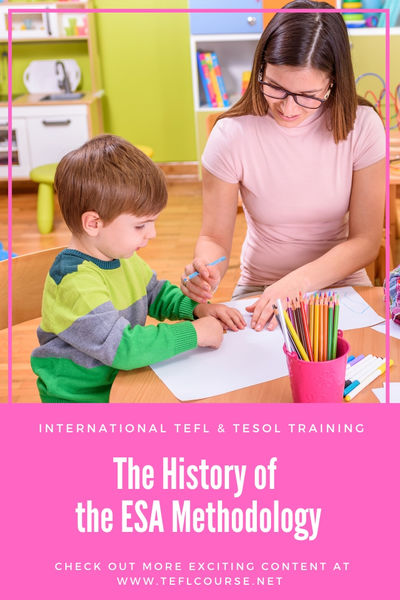The History of the ESA Methodology

ESA is a learning methodology invented by Jeremy Harmer. April 30, 1947, He has taught English in Mexico and the UK and has trained teachers around the world. He is the series editor of the "How to teach" series, and the author of the highly acclaimed The Practice of English Language Teaching and How to teach English.
Table of Contents
Do you want to teach English abroad? Take a TEFL course!
This post was written by our TEFL certification graduate Nawal S. Please note that this blog post might not necessarily represent the beliefs or opinions of ITTT.
The principles of the method
The ESA method which he invented, has all the factors students need in a classroom, for example, motivated, exposed to the language, and have the opportunity to use it. ESA is short for engaging, study activate. The three most needed factors a teacher need to base his/her classroom. By using ESA, gives teacher's the flexibility to conduct a classroom in an organized and productive way.
The engage phase is where the teacher gets the students motivated, heated up, and ready to dive into the new lesson. Engaging the students can include showing pictures, playing simple games, discoveries, discussions with the whole class, miming and acting, prompting the students to answer, and using questions to get the students thinking and speaking in English. The goal of the engage phase is to get the student's attention and to elicit the meaning of words or topics that will be covered in the lesson.

Also Read: Can I teach English abroad without a work visa?
The study phase is where the teachers give the students the lesson planned. The study phase can consist of many activities, such as studying from texts and dialogues, example sentences, crosswords, gap-fill exercises, word searches, matching games, and drilling. All of them are purposely made with the students to help them understand and fully engulf new words or structures.
The activate phase is where the teacher practices what the students have learned with them. The activate phase may include discussions that are for the whole class, small groups, or even pairs, role-play, story building, tasks such as posters or advertisements, simulations, and debates. Its main purpose is to get the students to use the word or structures learned so that the teacher knows which of the students learned the lesson correctly and which did not. Also, for the students to have fun.
Also Read: How do I find a job teaching English in Italy?
Typical Structure
The most common structure of ESA is the straight-arrow method which starts with an engaging stage, then a study stage, and then ends with an activate phase. Teachers can also use a boomerang structure or patchwork structure. Boomerang is where there's an activation phase after each phase of study or engagement. Patchwork is where the teacher moves the class between multiple phases of activate study and engage, to keep their minds open. In the end, all that matters is that the teacher starts by engaging the students and ends with activating the students.
Do you want to teach English abroad? Take a TEFL course!
So basically, the ESA is a great method that covers every needed aspect that will help any language learner. It also is a generalized guide for teachers to follow so they don't need a lot of preparations. An experienced teacher would want to have the class full of life and active so he or she shouldn't follow the way in every class.
Apply now & get certified to teach english abroad!
Speak with an ITTT advisor today to put together your personal plan for teaching English abroad.
Send us an email or call us toll-free at 1-800-490-0531 to speak with an ITTT advisor today.
Related Articles:
- TEFL Breakdown - What Subjects Will Your TEFL Course Cover?
- 5 Reasons Why Teaching English Abroad Enhances Your Career Prospects
- Top 5 Tips: How to Learn a New Language When Teaching English Abroad
- 4 Top Tips for Getting Your TEFL Certificate on the Road
- The How-To Guide for Americans to Teach English in Europe
- 5 Great Places to Teach English Abroad Without a Degree




